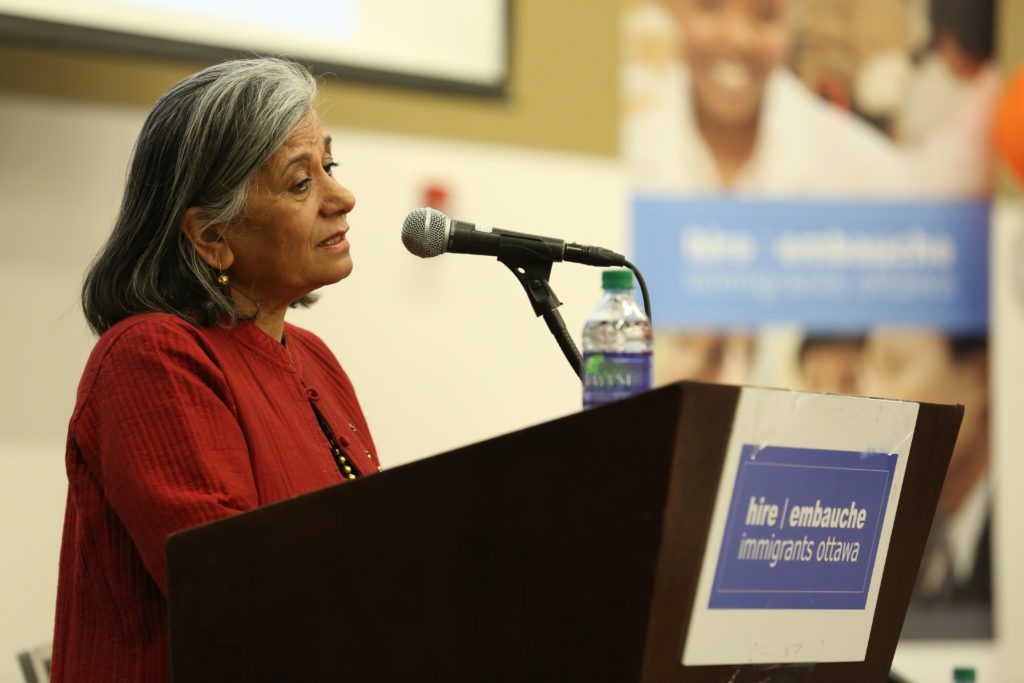1,000,000 new immigrants by 2021: Canada to open doors, but is it good for the country?
 Canada is planning to open its doors to more immigrants as the government seeks to fill gaps in the labour market.
Canada is planning to open its doors to more immigrants as the government seeks to fill gaps in the labour market.
“In certain regions, the hunger for workers is huge,” federal Immigration Minister Ahmed Hussen said on Oct. 31, when the announcement was made.
The new immigration target will rise 350,000 for 2021 and that number is expected to rise annually. There are plans for admitting 310,000 immigrants this year, 330,000 in 2019 and 340,000 in 2020. That adds up to more than one million newcomers over the next three years.
“I think the immigration goals that have been put forward are sensitive and doable,” Independent Sen. Ratna Omidvar told Yahoo Canada. “It is economically imperative for us to increase our population and to find workers for our economy at all ends of the economic spectrum.”
The federal government’s Advisory Council on Economic Growth called for 450,000 newcomers annually by 2021, but the Liberals are treading carefully. Hussen says the government is aware of the challenges that come with bringing so many immigrants in at one time.
“You need to be able to house them, you need to be able to settle them, you need to be able to provide integration services,” the minister said. “We can’t just go to 450,000 at once. You need to build up to that.”
Is bigger always better?
Labour shortages have been reported in Canada. A Canadian Federation of Independent Business report says there were 399,000 vacant jobs in the country during the fourth quarter of 2017. That’s why the vast majority of these new immigrants are coming under economic programs designed to address skills shortages and gaps in the labour market.
Some see the growing influx as a potential threat to Canadian workers and its culture. In August, Quebec MP Maxime Bernier criticized the federal Liberals for “extreme multiculturalism,” setting up the debate over whether having so many newcomers at one time is good for Canada.
“It’s going to create all kinds of tensions,” University of New Brunswick’s Prof. Ricardo Duchesne told Yahoo Canada. “No one is doing that outside the West because they’re not insane to do such a thing.”
Duchesne says the idea that bigger is better is not necessarily true, pointing to northern European countries as examples. When measuring success based on gross domestic product (GDP) per capita in U.S. dollars, Finland ($50,070), Denmark ($61,230) Norway ($82,370) are all outperforming Canada ($46,730), according to International Monetary Fund data for October 2018.
“There’s a lot more behind this,” Duchesne said. “The entire Western world is being subjected to mass immigration for some decades now and only recently did they start saying that this is now necessary because the fertility rate is really low in Western nations.”
Not enough Canadian babies
Canada’s low fertility rate has been an issue for decades. Statistics Canada says the last time Canadians were having enough children to maintain the level of replacement was in 1971. Since then, Canadians simply haven’t been having enough babies to sustain the population.
Statistics Canada notes migrants now account for approximately two-thirds of Canada’s population growth as the country becomes increasingly reliant on immigration.
Duchesne insists there are other ways to address the low fertility rate, such as encouraging Canadians to have more children like they do in Italy and Japan.
“They’re not opening their borders to mass immigration. They are looking for other strategies,” Duchesne said.
Omidvar admits more could be done to create some incentives for Canadians to have more children. However, she says Canada is different from other countries because it’s been built on flows of immigration.
“We’re actually in the sweet spot. We should encourage Canadians to have more children, absolutely, and we should keep up a strategic immigration program to meet our domestic labour market and our demographic needs,” Omidvar said. “It’s not an either or.”
Read the full article on Yahoo News: